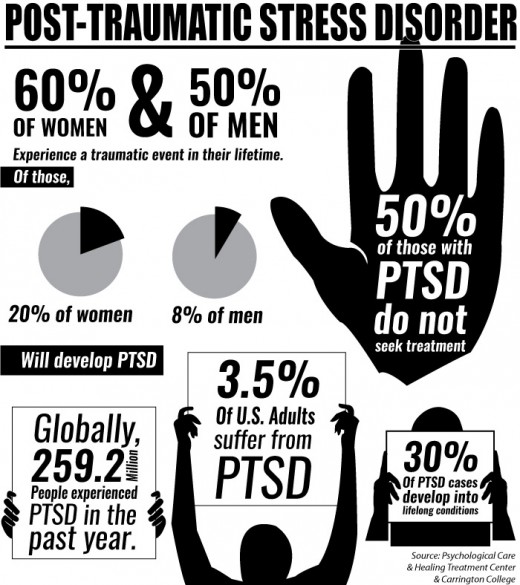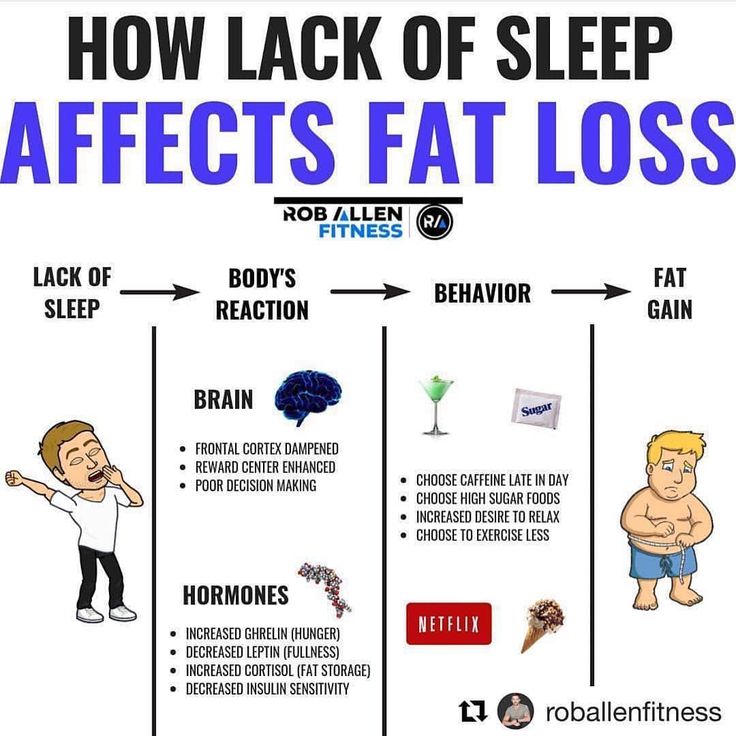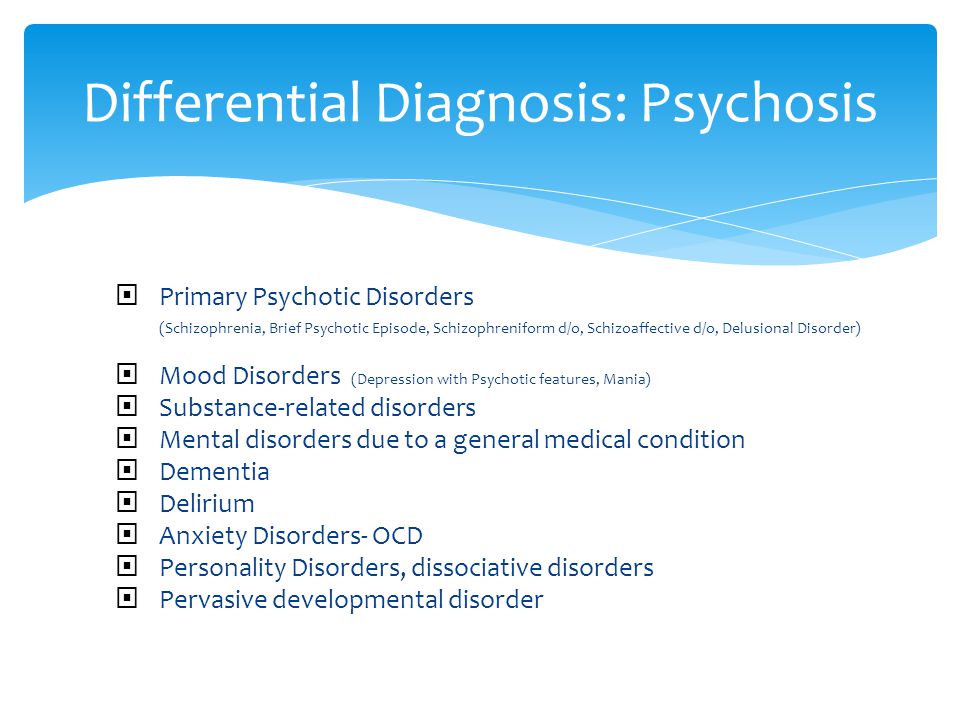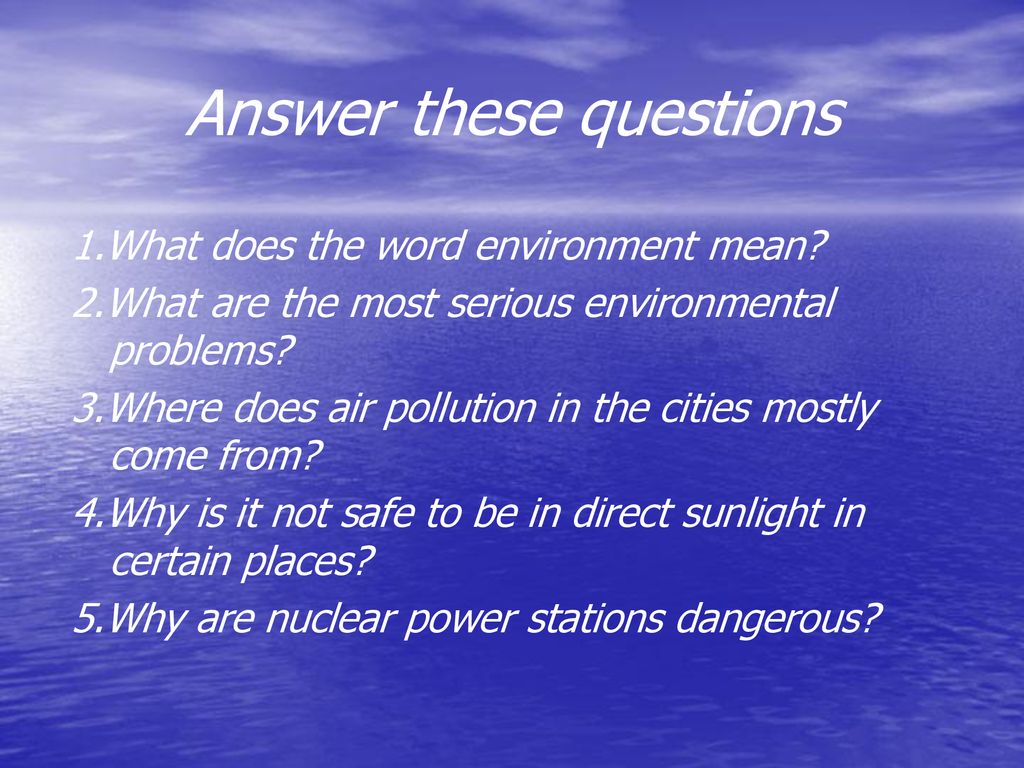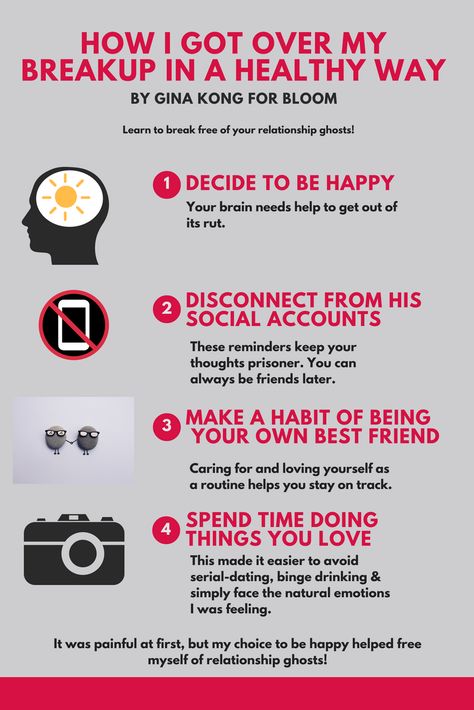Post traumatic relationship disorder
Relationship PTSD: What It Means & Recognizing the Signs
Many of us have had our fair share of bad relationships, but some relationships are toxic enough to leave long-lasting scars - though not all of these are visible. Abusive relationships can cause a lot of damage to one’s emotional and mental health. It can feel distressing and heartbreaking, to say the least, when someone you love starts to lie, manipulate, and abuse you. In many cases, a partner’s toxic behavior is bad enough to where the person on the receiving end of the abuse develops relationship PTSD. Here’s a guide on post-traumatic relationship syndrome and how to recognize the signs.
What Is Post-Traumatic Stress Disorder (PTSD)?
You’ve probably heard of post-traumatic stress disorder or PTSD. This is a mental health disorder that develops in some people who have experienced or witnessed traumatic events, including the death of a loved one, a natural disaster, sexual assault, and more. While experiencing fear is natural during and after a traumatic situation, people with PTSD were never able to recover from the trauma and instead developed worse symptoms.
Those who continue to experience the lingering effects from the fight-or-flight response to trauma may be diagnosed with PTSD. People who have PTSD experience stress or extreme fear when they come across particular triggers, reminders of the event, or similar situations to the event, even if they aren’t in danger.
Moreover, not everyone with PTSD has personally gone through a traumatic event. Even situations like the loss of a loved one can cause PTSD. Additionally, most but not all traumatized people experience short-term PTSD, and the majority don’t develop chronic PTSD. Again, this depends on the cause of their symptoms and whether they receive mental health treatment.
Symptoms of PTSD usually begin within 3 months of the traumatic event, but sometimes up to a year afterward. Symptoms must last more than a month for a person to be diagnosed with PTSD. While some people recover after 6 months, others develop this condition chronically. The recovery process all depends on whether the individual receives care, their support system at home, and more.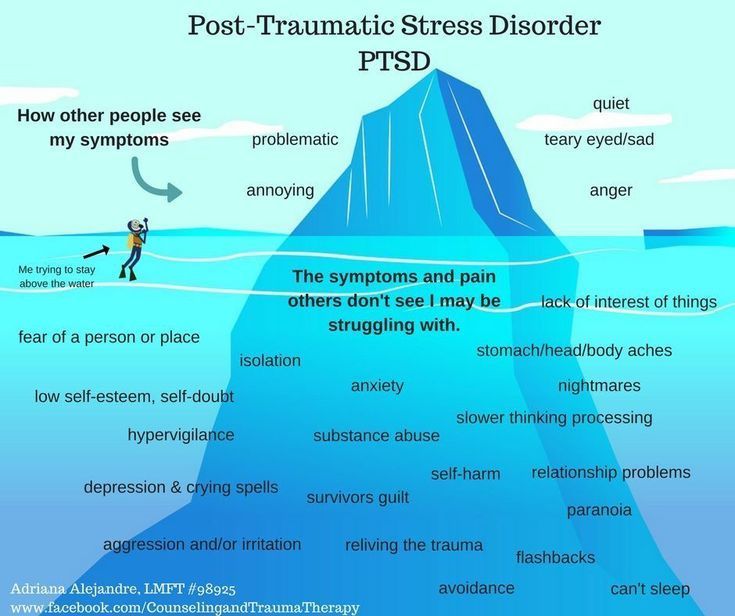
Can You Get PTSD From a Relationship?
Yes, you can get PTSD from a relationship. While the idea of getting PTSD from relationships is often the butt of many breakup jokes, many people have been severely mentally and emotionally scarred by toxic relationships to the point where they need professional care.
Otherwise known as post-traumatic relationship syndrome (PTRS), relationship PTSD refers to the response a person may have to one or more exposures to a traumatic event within the context of an intimate relationship with another person. The most common causes of PTSD in relationships are verbal, physical, emotional, psychological, and sexual abuse.
PTSD from past relationships is a subcategory of post-traumatic stress disorder, where the main difference is the stressor or cause of PTSD and the emotional reaction to it. This means that people with relationship PTSD may not meet all the diagnostic criteria for a PTSD diagnosis, but they do meet enough of these criteria to be diagnosed with post-traumatic relationship syndrome.
Relationship PTSD Symptoms
PTRS does cause some PTSD symptoms, but symptoms are mostly linked to intensely emotional reactions that negatively affect social interactions. In the end, the relationship itself becomes the source of PTSD rather than a single event.
PTRS can lead to lower self-esteem, self-blame, insecurity, and more. It can break down a person’s mental and emotional health to the point where other areas of their lives are negatively impacted. Even so, people who experience PTRS during a relationship might not realize their symptoms until after the relationship ends.
PTSD from abusive relationships can also be difficult to recognize because it gradually grows over a long period rather than resulting from a single event. The relationship itself is the source of the trauma rather than one isolated incident. People with relationship PTSD often feel unsafe, out of control, ashamed, guilty, and often struggle with negative intrusive thoughts.
Typical PTSD-from-relationship symptoms include:
- Easily irritated with little or no provocation
- Insomnia
- Hypervigilance or being “on guard” at all times, especially when reminded of the trauma
- Difficulty trusting others
- Difficulty maintaining healthy relationships with others
- Loneliness or isolation
- Quickly jumping into a new relationship
- Shame, guilt, or self-blame (also symptoms of trauma bonding)
- Sexual dysfunction or decreased libido
- Feeling that the world isn’t safe
People who have developed PTSD from a relationship may also struggle with intrusive symptoms like:
- Thoughts about the trauma or relationship that seem to come out of nowhere
- Flashbacks or feeling like you’re reliving the experience(s) in the form of mental images, intrusive thoughts, and nightmares
- Nightmares or dreams about the trauma
- Feeling extreme distress when reminded of the trauma either by the person or a reminder of the person from the relationship
- Emotional responses that are excessive considering the current emotional stressor
As we mentioned previously, common causes of relationship PTSD include verbal, physical, emotional, mental, and sexual abuse.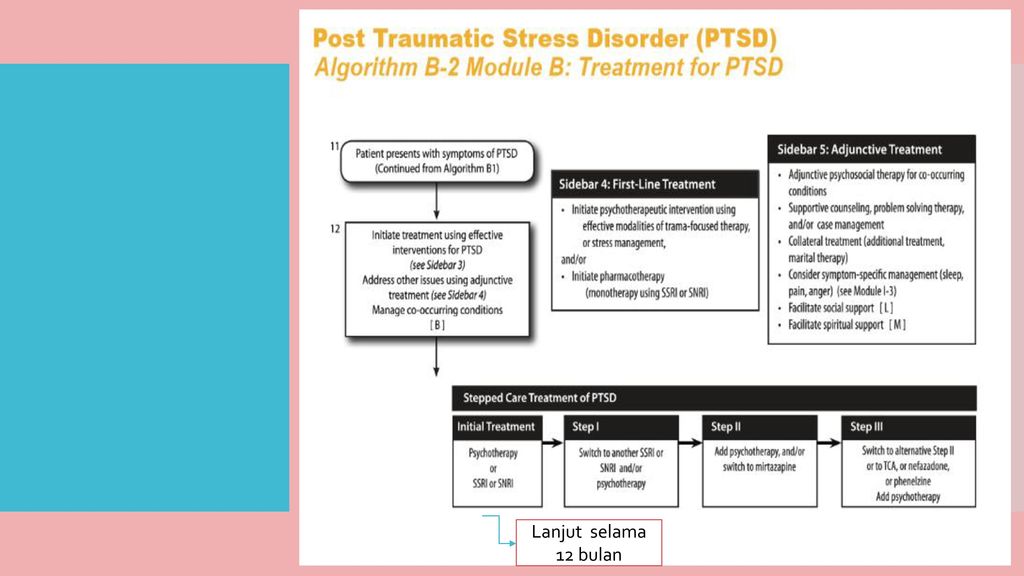 But, unlike traditional PTSD, PTRS only occurs in someone within an intimate relationship with someone rather than witnessing or experiencing a single traumatic event outside of an intimate relationship.
But, unlike traditional PTSD, PTRS only occurs in someone within an intimate relationship with someone rather than witnessing or experiencing a single traumatic event outside of an intimate relationship.
With that said, if you’re in a potentially harmful relationship, don’t wait to get out of it. Below are some early warning signs of a toxic relationship to look out for:
- Belittling
- Gaslighting
- Controlling behavior
- Criticism
- Emotional abuse
- Punching, hitting, or any form of purposeful injury or attempts to cause harm to the other person
- Sexual abuse, including non-consensual sex and sexual coercion
Help for PTSD at Banyan
If anything you’ve read about PTRS sounds familiar to you and your experience, don’t hesitate to reach out for help. Relationship PTSD can lead to a clinical PTSD diagnosis without professional care. Suicide, substance abuse, and self-harm are all risks of untreated PTRS, so it’s important to seek PTSD treatment as soon as you recognize any symptoms.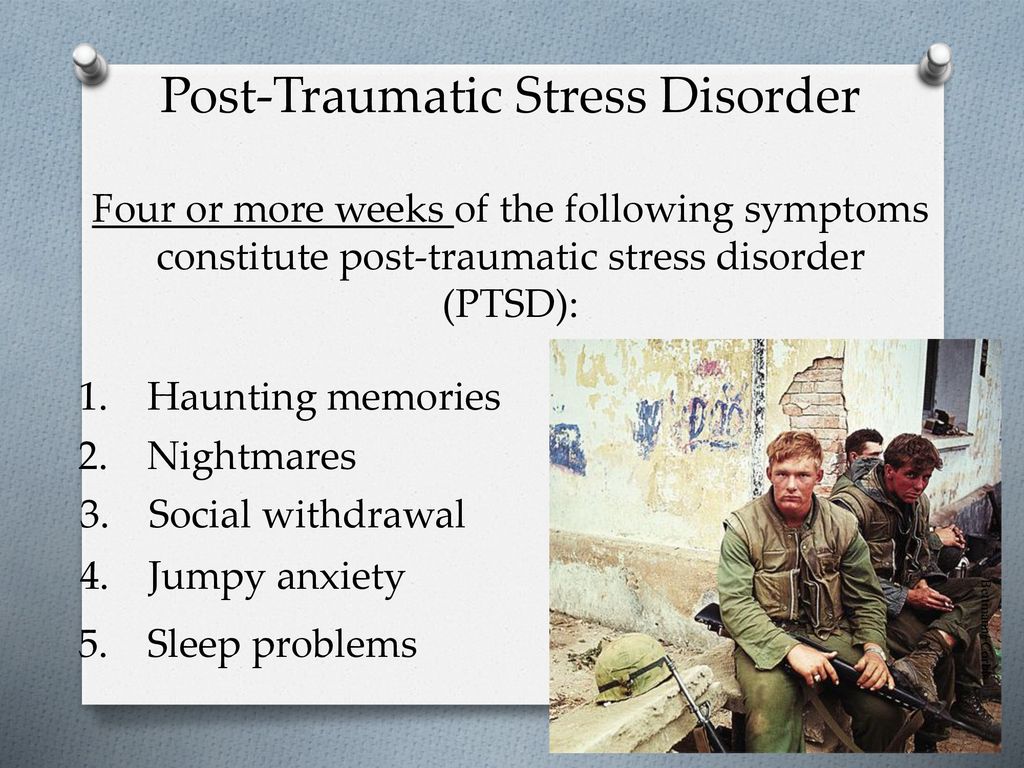
While no one’s experience with relationship PTSD is the same, you’re not alone in your experience. Reaching out to a therapist or mental health professional is a great way to heal from trauma and move forward. Several of our Banyan rehab locations offer mental health programs like PTSD treatment to help people recover from their disorders.
With the use of unique therapy programs like cognitive behavioral therapy (CBT), our specialists slowly guide patients through recovery and help them discover the source of their symptoms and develop healthy tactics to manage them. We’ve helped thousands, and we can help you, too.
For more information about our mental health and substance abuse services, call Banyan Treatment Center today at 888-280-4763.
Related Reading:
Stigmas Surrounding PTSD
The Relationship Between PTSD and Addiction
Post-Traumatic Relationship Disorder: 15 Signs
The end of a romantic relationship can create confusing feelings for former partners, some of which can be conflicting.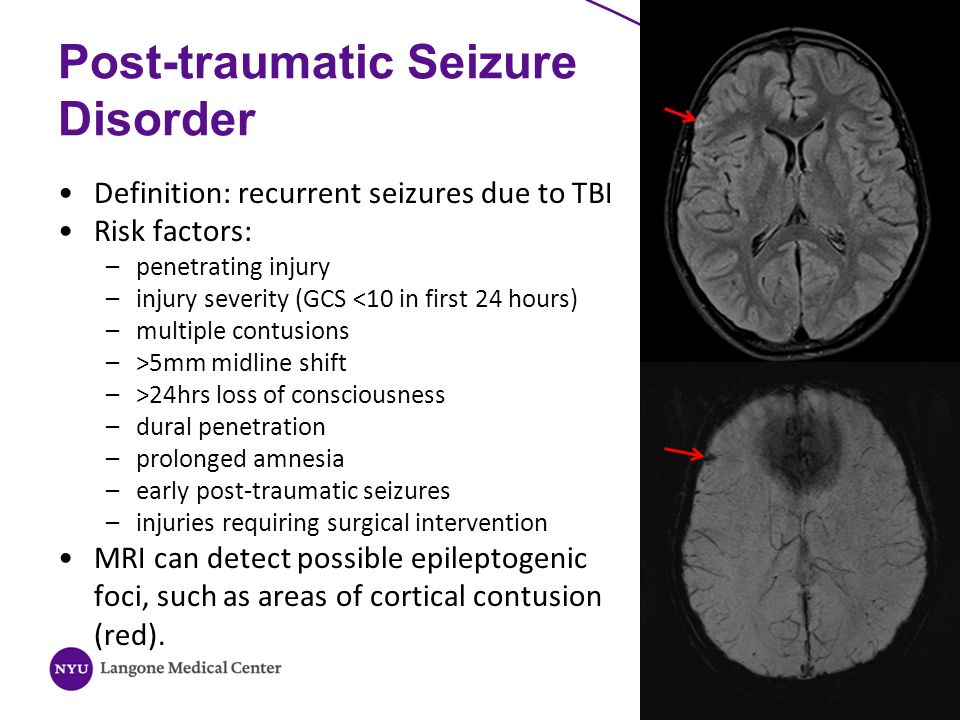 Some partners might experience a sense of relief, relief the disagreements and the arguing has come to an end. While others may feel depressed, lonely, or anxious at the thought of forging a new path without their former partner. It is completely natural to engage in a period of mourning for the loss of relationship. However, if you exit a relationship carrying weighted baggage from that relationship you may need to consider the possibility that you may be experiencing post traumatic relationship disorder. If you are experiencing symptoms that seem similar to post-traumatic stress disorder (PTSD), yet, the intense negative feeling typically occur within the context of a relationship, the thought of entering a new relationship, when you reflect on your previous relationship, or exhibit a pronounced distrust of others and their intentions, then you may be struggling with PTRS.
Some partners might experience a sense of relief, relief the disagreements and the arguing has come to an end. While others may feel depressed, lonely, or anxious at the thought of forging a new path without their former partner. It is completely natural to engage in a period of mourning for the loss of relationship. However, if you exit a relationship carrying weighted baggage from that relationship you may need to consider the possibility that you may be experiencing post traumatic relationship disorder. If you are experiencing symptoms that seem similar to post-traumatic stress disorder (PTSD), yet, the intense negative feeling typically occur within the context of a relationship, the thought of entering a new relationship, when you reflect on your previous relationship, or exhibit a pronounced distrust of others and their intentions, then you may be struggling with PTRS.
Post-Traumatic Relationship Stress (PTRS) is newly proposed mental health syndrome that occurs subsequent to the experience of trauma in an intimate relationship.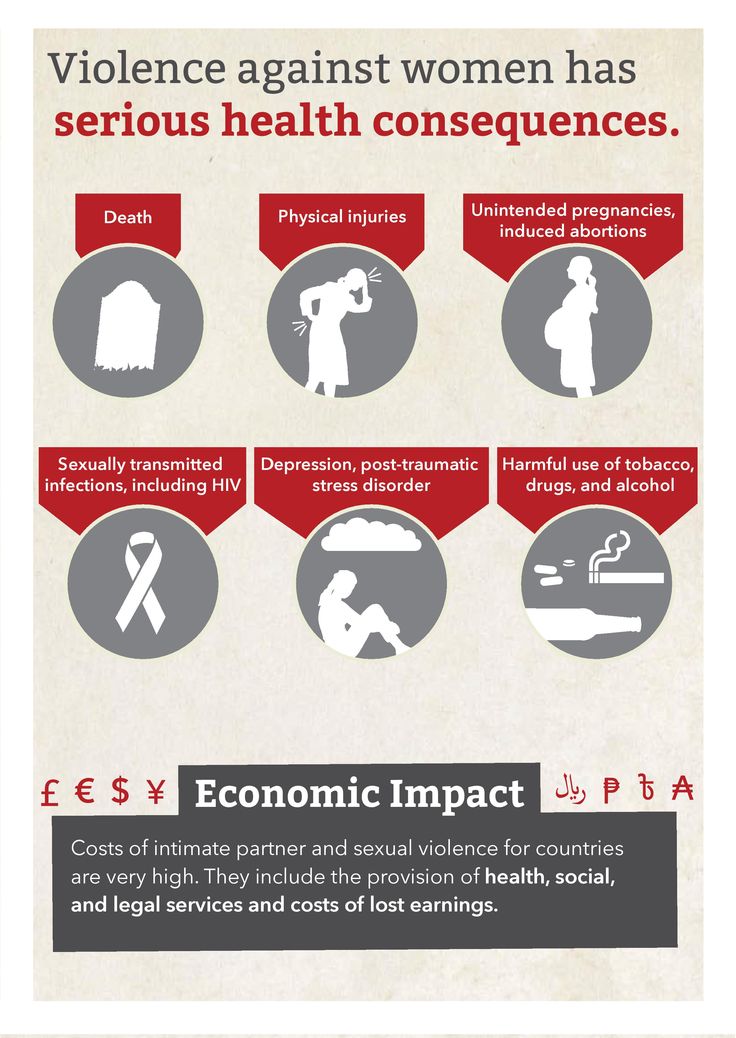 It includes the intrusive and arousal symptoms of PTSD; however, it lacks the avoidance symptoms required for a diagnosis of PTSD due to a very different mode of coping with the traumatized state from that which is characteristic of individuals with PTSD. Unlike PTSD, PTRS stems from the fear, mistrust, and trauma that occurred within a romantic relationship. PTRS can be defined as an anxiety disorder that can occur subsequent to the experience of physical, emotional, or psychological abuse in the context of an intimate partner relationship.
It includes the intrusive and arousal symptoms of PTSD; however, it lacks the avoidance symptoms required for a diagnosis of PTSD due to a very different mode of coping with the traumatized state from that which is characteristic of individuals with PTSD. Unlike PTSD, PTRS stems from the fear, mistrust, and trauma that occurred within a romantic relationship. PTRS can be defined as an anxiety disorder that can occur subsequent to the experience of physical, emotional, or psychological abuse in the context of an intimate partner relationship.
Potential Symptoms of PTRS Include:
Intense fear or rage at the former partner or future potential partners Intrusive images/flashbacks of abuse incurred during the course of the relationship (which were not present before the trauma experienced during the relationship) Extreme psychological distress Significant changes in eating/sleeping habits Significant changes/fluctuations in weight Restlessness/increased anxiety Interruptions in cognition Challenges with recall Hypervigilance Self-isolation Fear of intimate relationships Sexual performance issues Feeling unsafe in the world Breakdown of social support system Marked distrust of others and their intentions
Thus, PTRS applies to individuals who have suffered physical, sexual, or severe emotional abuse in the context of an intimate relationship, and who consequently display the above symptoms. PTRS falls into the category of a posttraumatic illness, since it develops along with the experience of trauma and would not have occurred if the person had not experienced the traumatic stressor(s). Notably, the symptoms of PTRS is not a severe as those of PTSD as it does not include the array of symptoms which characterize complex PTSD such as, dissociation, threat of loss of life, pathological changes in identity, etc. Clients with PTRS appear to be overly courageous in taking on more than they can handle with a concomitant failure to engage in adequate psychological self-protection.
PTRS falls into the category of a posttraumatic illness, since it develops along with the experience of trauma and would not have occurred if the person had not experienced the traumatic stressor(s). Notably, the symptoms of PTRS is not a severe as those of PTSD as it does not include the array of symptoms which characterize complex PTSD such as, dissociation, threat of loss of life, pathological changes in identity, etc. Clients with PTRS appear to be overly courageous in taking on more than they can handle with a concomitant failure to engage in adequate psychological self-protection.
Fortunately, treatment approaches are available for PTRS. Treatment can include both individual psychotherapy and support groups. In PTRS, the client needs to be taught to use desensitization techniques to make the processing of the trauma more manageable. Treatment approach used for individuals should emphasize that traumatic relationships can not only be survived but post traumatic growth can often occur.
PTSD
") end if %>
Variant of Acrobat Samana Gaze | Acrobat Reader Samana Download
PTSD is a normal response
for severe traumatic events.
This booklet deals with signs,
symptoms and treatments for PTSD.
New York State
Department of Mental Health
Have you experienced a terrible and dangerous event? Note please, those cases in which you recognize yourself.
- Sometimes, out of the blue, everything that happened to me is happening again. I never know when to expect it again.
- I have nightmares and memories of the terrible incident which I have experienced.
- I avoid places that remind me of that incident.
- I jump on the spot and feel uneasy at any sudden movement or surprise. I feel alert all the time.
- It's hard for me to trust someone and get close to someone.
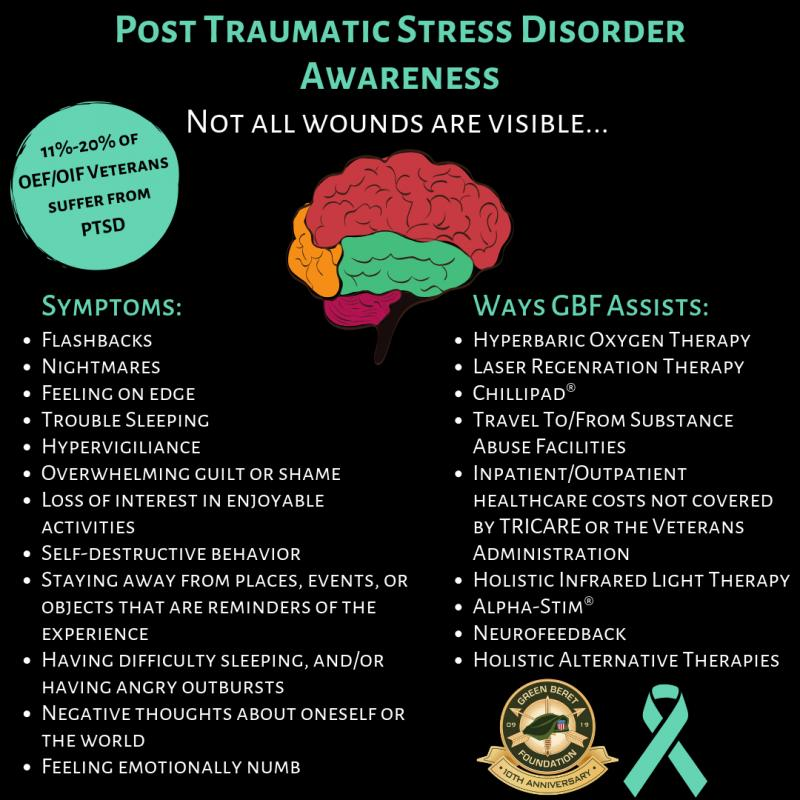
- Sometimes I just feel emotionally drained and deaf.
- I get angry very easily.
- I am tormented by guilt that others died, but I survived.
- I sleep poorly and experience muscle tension.
PTSD is a very serious condition that needs to be treated.
Many people who have experienced terrible events suffer from this disease.
It is not your fault that you fell ill, and you should not suffer from it.
Read this booklet to find out how you can be helped.
You can get well and enjoy life again!
What is post-traumatic stress disorder (PTSD/PTSD)?
PTSD is a very serious condition. PTSD symptoms may occur in a person who has experienced a terrible traumatic event. This disease is susceptible medical and therapeutic treatment.
PTSD can occur after you:
- Have been a victim of sexual abuse
- Have been a victim of physical or emotional domestic violence
- Victim of a violent crime
- Been in a car accident or plane crash
- Survived a hurricane, tornado, or fire
- Were at war
- Survived a life-threatening event
- Witnessed any of the above events
If you have post-traumatic stress disorder, you often have nightmares or memories associated with the event.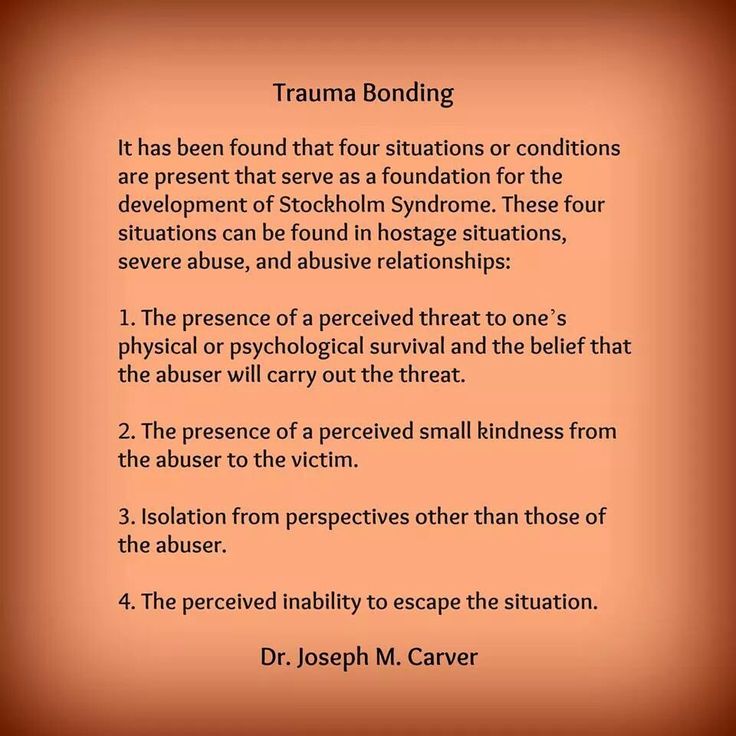 you try to hold on away from anything that might remind you of the experience.
you try to hold on away from anything that might remind you of the experience.
You are bitter and unable to trust or care for others. You are always on your guard and see a hidden threat in everything. You become not by itself, when something happens suddenly and without warning.
When does PTSD start and how long does it last?
In most cases, post-traumatic stress manifests itself approximately three months after the traumatic event. In some cases, signs Post-traumatic stress symptoms only show up years later. Post-traumatic Stress affects people of all ages. Even children are not immune from it.
Some get better after six months, others may suffer from it illness for much longer.
Am I the only one with this disease?
No, you are not alone. Every year, 5.2 million Americans suffer from PTSD.
Women suffer from this disease two and a half times more often than men.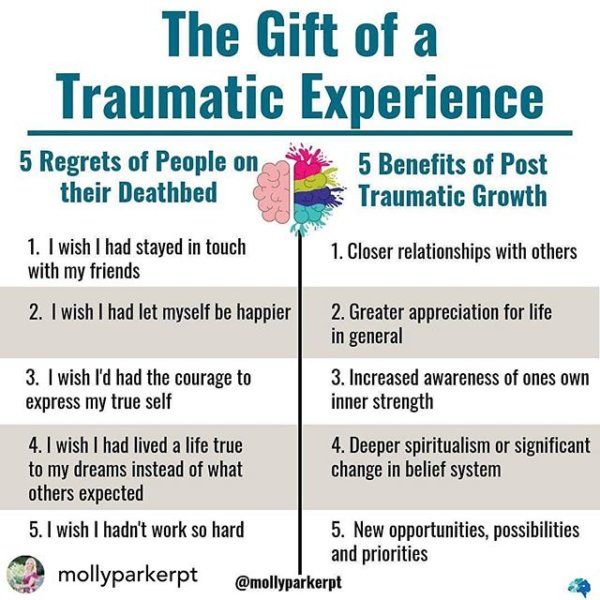 The most common traumatic events that cause PTSD in men are: rape, participation in hostilities, abandonment and abuse in childhood. The most traumatic events in women are rape, sexual molestation, physical assault, threat weapons and childhood abuse.
The most common traumatic events that cause PTSD in men are: rape, participation in hostilities, abandonment and abuse in childhood. The most traumatic events in women are rape, sexual molestation, physical assault, threat weapons and childhood abuse.
What other conditions can accompany PTSD?
Common depression, alcoholism and drug addiction, or other anxiety disorders. The likelihood of successful treatment increases if these comorbidities to identify and treat in time.
Frequent headaches, gastroenterological problems, problems with the immune system, dizziness, chest pain or discomfort in other parts of the body. It often happens that a doctor treats physical symptoms, unaware that their cause lies in PTSD.
The National Institute of Mental Health (NIMH) recommends therapists to learn from patients about experiences of violence, recent losses and traumatic events, especially when symptoms persist are returning. After diagnosing PTSD, it is recommended to refer patient to a mental health specialist who has experience in the treatment of patients with PTSD.
After diagnosing PTSD, it is recommended to refer patient to a mental health specialist who has experience in the treatment of patients with PTSD.
What should I do to help myself in this situation?
Talk to your doctor and tell him about your experience, and how you feel. If you are visited by terrible memories, overcomes depression and sadness if you have trouble sleeping and constantly embittered - you should tell your doctor about all this. Tell him Are any of these conditions preventing you from doing your daily activities? lead a normal life. You may want to show this booklet to your doctor. This may help explain to him how you feel. Ask your doctor examine you to make sure there are no physical illnesses.
Ask your doctor if he has had patients with post-traumatic stress. If your doctor does not have a special preparation, ask him for directions to doctor with relevant experience.
How can a doctor or psychotherapist help me?
Your doctor may prescribe medicine to help reduce your fear or tension.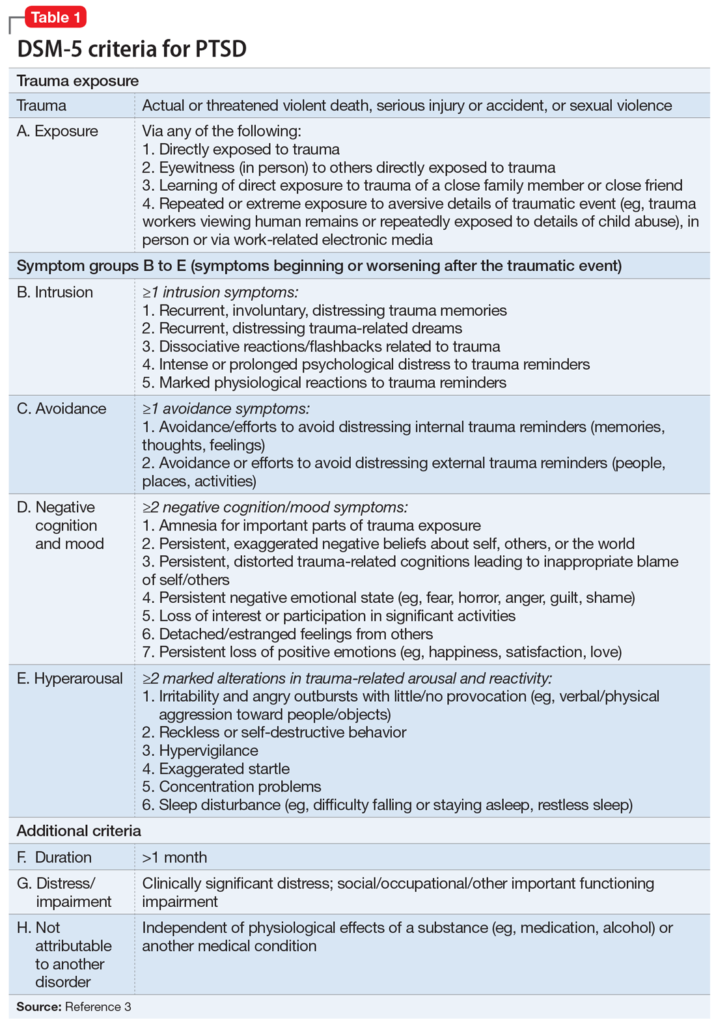 However, it should be borne in mind that usually several weeks before the medicine starts to work.
However, it should be borne in mind that usually several weeks before the medicine starts to work.
Many PTSD sufferers benefit from talking with a professional or other people who have experienced traumatic events. This is called "therapy". Therapy will help you get over your nightmare.
One man's story:
"After I was attacked, I He constantly felt fear and depression, became irritable. I couldn't sleep well and lost my appetite. Even when I tried not think about what happened, I was still tormented nightmares and terrible memories.
“I was completely at a loss and didn't know what to do. one buddy advised to see a doctor. My doctor helped me find a specialist in post-traumatic stress."
“I needed a lot of strength, but after medication and a course of therapy, I gradually come to my senses. It’s good that I called my doctor then.”
PTSD and the military
If you are in the military, you have probably been in combat.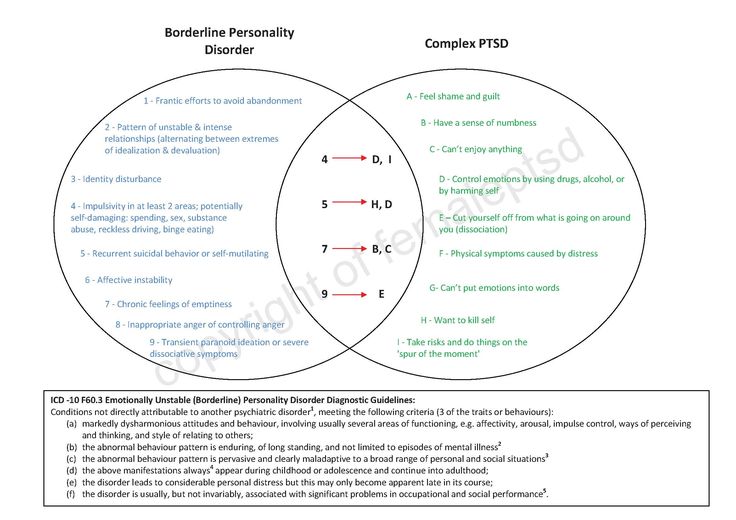 You, probably got into terrible and life-threatening situations. They shot at you you have seen your friend shot, you have seen death. experienced you events can cause PTSD.
You, probably got into terrible and life-threatening situations. They shot at you you have seen your friend shot, you have seen death. experienced you events can cause PTSD.
Experts say that PTSD occurs:
- Nearly 30% of Vietnam War veterans
- Nearly 10% of Gulf War veterans (Operation Desert Storm)
- Almost 25% of veterans of the war in Afghanistan (operations "Introducing freedom") and veterans of the war in Iraq (operations "Iraqi Freedom")
Other factors of the military situation can serve as an additional stress to and so stressful situation and can contribute to the development of PTSD and other mental problems. Among these factors are the following: your military specialty, the political aspects of the war, where the battle takes place and who your enemy is.
Another reason that contributes to PTSD in military personnel can be Military Sexual Assault (MST) – any form of sexual harassment or sexual abuse while serving in the military.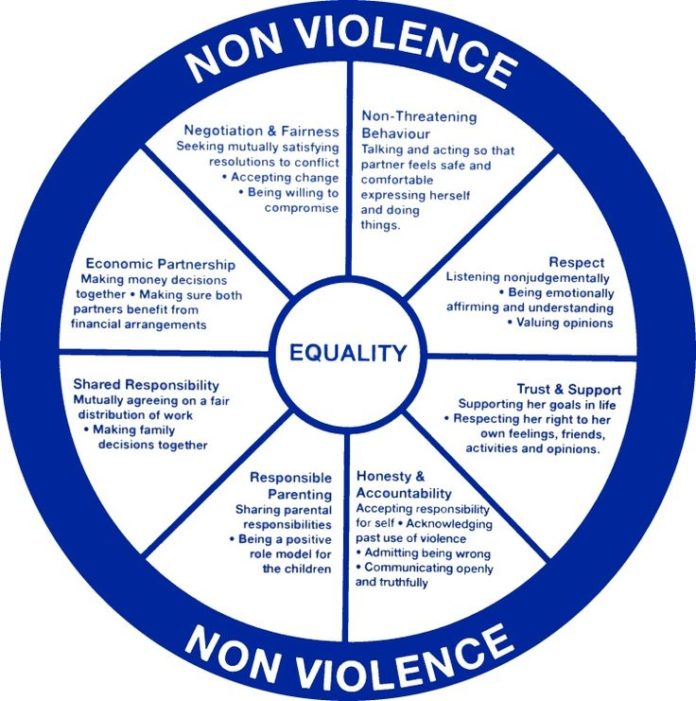 MST can happen with men and women, and can occur in peacetime, during war training or during the war.
MST can happen with men and women, and can occur in peacetime, during war training or during the war.
Veterans Affairs (VA) health care approximately:
- 23 out of 100 women (23%) report sexual violence during military service
- 55 out of 100 women (55%) and 38 out of 100 men (38%) were exposed to sexual harassment while serving in the army
Although the trauma of sexual assault is more common in the military among women, more than half of veterans who have experienced sexual trauma violence in the army - it's men.
Remember, you can get the help you need right now:
Tell your doctor about your experience and how you feel. If your doctor does not have special training in the treatment of PTSD, ask him for a referral to a doctor who has relevant experience.
PTSD research
To help those suffering from PTSD, the National Institute of Conservation Mental Health (NIMH) supports research into the study of PTSD, as well as other thematically related to PTSD research on problems anxiety and fear. The challenge for research is to find new ways to help people cope with trauma, as well as find new treatment options and, The main thing is to prevent disease.
The challenge for research is to find new ways to help people cope with trauma, as well as find new treatment options and, The main thing is to prevent disease.
Research on possible risk factors for PTSD
Today, the attention of many scientists is focused on genes that play a role in having terrible memories. Understanding the mechanism of "creation" of scary memories can help improve or find new ways to alleviate symptoms of PTSD. For example, PTSD researchers have identified genes that are responsible for:
Statmin is a protein involved in the formation of terrible memories. During one experiment, mice were placed in environment designed to instill fear in them. In this situation mice lacking the statmin gene, in contrast to normal mice were less likely to "freeze" - i.e. exercise natural defensive response to danger. Also in the environment designed to evoke innate fear in them, they demonstrated it to a lesser extent than normal mice, more willingly mastering the open "dangerous" space. 1
1
GRP (gastrin-releasing peptide/GRP) - signal substance brain released during emotional events. At in mice, GWP helps control the fear response, and lack of GWP can lead to a longer memory of fear. 2
Scientists have also discovered a variant of the 5-HTTLPR gene that controls serotonin (a brain substance associated with mood), which, as it turns out, feeds the fear response. 3 It seems that, like in the case of other mental disorders, in the development of PTSD different genes are involved, each of which contributes to the formation of the disease.
Understanding the causes of PTSD can also be helped by studying different areas brain responsible for fear and stress. One of these areas is cerebellar amygdala, responsible for emotions, learning and memory. It turned out that she plays an active role in the emergence of fear (or other words, "teaches" to be afraid of something, for example, to touch a hot stove), as well as in the early phases of fear repayment (or in other words, "teaches" Do not be scared).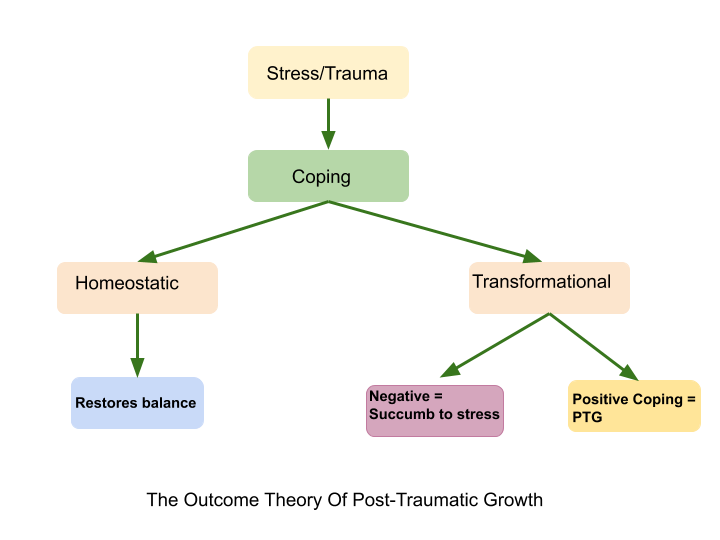 4
4
The retention of faded memories and the weakening of the initial fear reaction are associated with the prefrontal cortex (PFC / PFC) of the brain, 4 responsible for decision making, problem solving and situation assessment. Each zone PFC has its own role. For example, when the PFC believes that a stressor is amenable to control, the medial prefrontal zone of the PFC suppresses the anxiety center deeply in the brainstem and controls the response to stress. 5 Ventromedial PFC helps maintain long-term fading of fearful memories, and her ability to perform this feature can be affected by its size. 6
Individual differences in genes or characteristics of regions of the brain brain can only set the stage for PTSD, but by themselves do not cause no symptoms. environmental factors such as childhood trauma, head trauma or mental illness in family, favor the development of the disease and increase the risk of disease, affecting the brain in the early stages of its growth.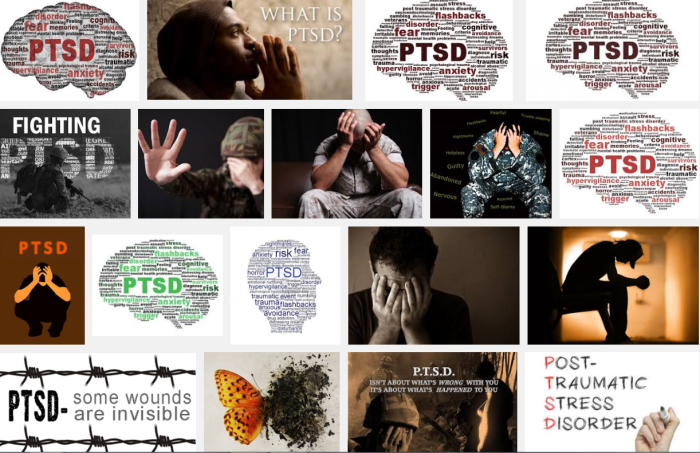 7 Except In addition, how people adapt to trauma is likely to be influenced by and characteristics of character and behavior, such as optimism and a tendency to consider problems in a positive or negative way, as well as social factors such as availability and use of social support. 8 Further research may show what combination of these factors or what other factors will allow ever predict who has a traumatic event cause PTSD, and who doesn't.
7 Except In addition, how people adapt to trauma is likely to be influenced by and characteristics of character and behavior, such as optimism and a tendency to consider problems in a positive or negative way, as well as social factors such as availability and use of social support. 8 Further research may show what combination of these factors or what other factors will allow ever predict who has a traumatic event cause PTSD, and who doesn't.
PTSD research
Currently, psychotherapy is used in the treatment of PTSD ("talk" therapy), drugs or drug-therapeutic combination.
Psychotherapy
Cognitive behavioral therapy (CBT) helps you learn differently think and react to frightening events that are the impetus for development PTSD, and can help bring the symptoms of the disease under control. There are several types cognitive behavioral therapy, including:
"Push" method - uses mental images, notes or visiting a place experienced trauma to help those affected face the overwhelming their fear and take control of it.
Behavior restructuring (cognitive restructuring) - encourages survivors of a traumatic event express depressing (often erroneous) thoughts about experienced trauma, challenge these thoughts and replace them with more balanced and appropriate.
Implementation in a stressful situation - teaches ways to reduce anxiety and the ability to cope with it, helping to reduce the symptoms of PTSD, and helps to correct the erroneous train of thought associated with the trauma experienced. NIMH is currently conducting research to study the reaction brain response to cognitive behavioral therapy versus response sertraline (Zoloft) - one of two drugs recommended and approved US Food and Drug Administration funds (FDA) for the treatment of post-traumatic stress. This research may help find out why some people respond better to medications, and others for psychotherapy
Drugs
Recently, in a small study, NIMH scientists found that if patients who are already taking a dose of prazosin (Minipress) at bedtime, add a daily dose, then this weakens the general symptoms of PTSD and stress reaction to reminders of the trauma experienced. 9
9
Another drug of interest is D-cycloserine (Seromycin), which increases the activity of a brain substance called N-methyl-D-aspartate, needed to pay off fear. During the study, which was attended by 28 people suffering from a fear of heights, scientists found that patients who received "push" therapy before a session D-cycloserine, showed lower levels of fear during the session compared to those who did not receive the drug. 10 Currently scientists study the effectiveness of the combined use of D-cycloserine and therapy for the treatment of post-traumatic stress.
Propranolol (Inderal), a beta-blocker drug, also under study whether it can be used to reduce post-traumatic stress and break the chain of scary memories. First experiments gave consoling results: it was possible to successfully weaken and, it seems, prevent PTSD in a small number of victims of traumatic events. 11
For example, in one preliminary study, scientists created a website self-help, based on the use of a psychotherapeutic method implementation in a stressful situation.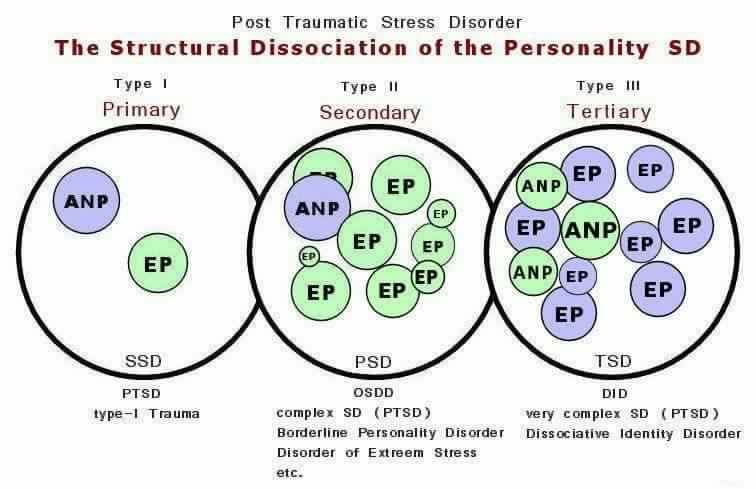 First, patients with PTSD meet in person with doctor. After this meeting, participants can go to the site to find more information about PTSD and how to deal with the problem; their doctors may also visit the site to give advice or briefing. In general, scientists believe that therapy in this form - promising treatment for a large number of people suffering from PTSD. 12
First, patients with PTSD meet in person with doctor. After this meeting, participants can go to the site to find more information about PTSD and how to deal with the problem; their doctors may also visit the site to give advice or briefing. In general, scientists believe that therapy in this form - promising treatment for a large number of people suffering from PTSD. 12
Scientists are also working to improve methods for testing early treatment and monitoring of survivors of massive trauma, on developing ways to teach them self-assessment skills and introspection and referral mechanism to psychiatrists (if necessary).
Prospects for PTSD research
In the last decade, rapid progress in the study of mental and biological PTSD has led scientists to conclude that there is a need to focus on prevention, as the most realistic and important goal.
For example, in order to find ways to prevent PTSD, with funding NIMH conducts research to develop new and orphan drugs, aimed at combating the underlying causes of the disease.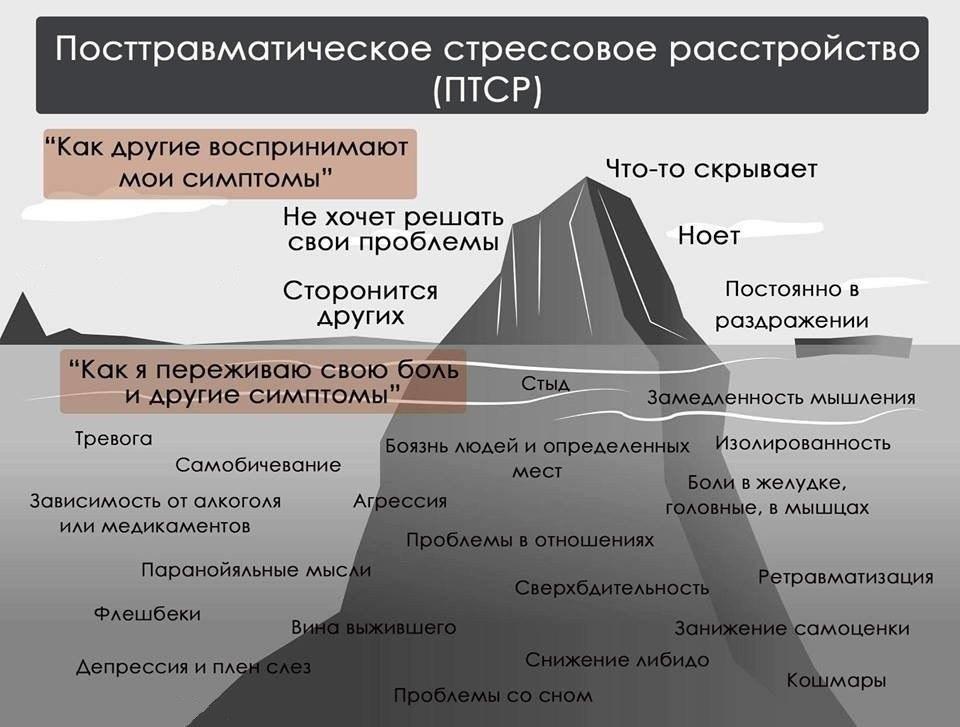 During another research scientists are looking for ways to enhance behavioral, personality and social protective factors and minimizing risk factors for prevent the development of PTSD after trauma. Another study is studying the question of what factors influence the difference in response to one or another method of treatment, which will help in the development of more individual, effective and productive methods of treatment.
During another research scientists are looking for ways to enhance behavioral, personality and social protective factors and minimizing risk factors for prevent the development of PTSD after trauma. Another study is studying the question of what factors influence the difference in response to one or another method of treatment, which will help in the development of more individual, effective and productive methods of treatment.
Where can I find more information?
MedlinePlus - resource from the American National Library of Medicine (U.S. National Library of Medicine and the National Institutes of Health) - offers the latest information on many health issues. Information about You can find PTSD at: www.nlm.nih.gov/medlineplus/posttraumaticstressdisorder.html.
National Institute of Mental Health
Office of Science Policy, Planning, and Communications
[National Institute of Mental Health
Science Policy Division research, planning and communications]
6001 Executive Boulevard
Room 8184, MSC 9663
Bethesda, MD 20892-9663
Phone: 301-443-4513; Fax: 301-443-4279
fax answering system Free answering machine: 1-866-615-NIMH (6464)
Text phone: 1-866-415-8051 toll-free
Email: nimhinfo@nih. gov
gov
National Center for Post-traumatic Stress Disorder
[National PTSD Center]
VA Medical Center (116D)
215 North Main Street
White River Junction, VT 05009
802-296-6300
www.ncptsd.va.gov
NOTES
- Shumyatsky GP, Malleret G, Shin RM, et al. Stathmin, a Gene Enriched in the Amygdala, Controls Both Learned and Innate Fear. cell. Nov 18 2005;123(4):697-709.
- Shumyatsky GP, Tsvetkov E, Malleret G, et al. Identification of a signal network in lateral nucleus of amygdala important for inhibiting memory specifically related to learned fear. cell. Dec 13 2002;111(6):905-918.
- Hariri AR, Mattay VS, Tessitore A, et al. Serotonin transporter genetic variation and the response of the human amygdala.Science. Jul 192002;297(5580):400-403.
- Milad MR, Quirk GJ. Neurons in medial prefrontal cortex signal memory for fear extinction.
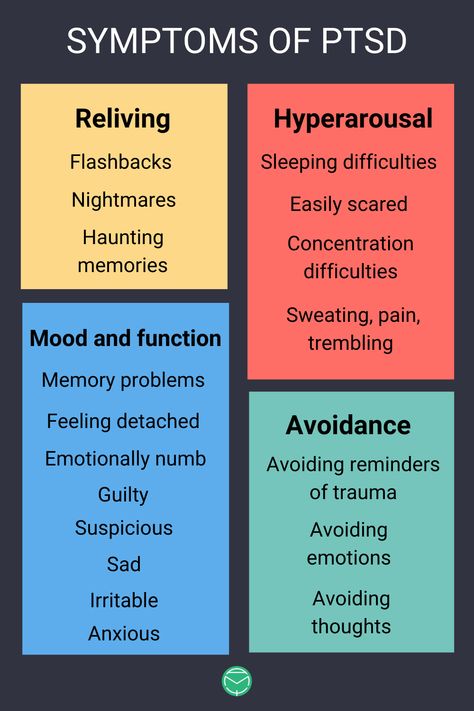 Nature. Nov 7 2002;420(6911):70-74.
Nature. Nov 7 2002;420(6911):70-74. - 5 Amat J, Baratta MV, Paul E, Bland ST, Watkins LR, Maier SF. Medial prefrontal cortex determines how stressor controllability affects behavior and dorsal raphe nucleus. Nat Neurosci. Mar 2005;8(3):365-371.
- Milad MR, Quinn BT, Pitman RK, Orr SP, Fischl B, Rauch SL. Thickness of ventromedial prefrontal cortex in humans is correlated with extinction memory. Proc Natl Acad Sci USA. Jul 26 2005;102(30):10706-10711.
- Gurvits TV, Gilbertson MW, Lasko NB, et al. Neurological soft signs in chronic posttraumatic stress disorder.Arch Gen Psychiatry. Feb 2000;57(2):181-186.
- Brewin CR. Risk factor effect sizes in PTSD: what this means for intervention. J Trauma Dissociation. 2005;6(2):123-130.
- Taylor FB, Lowe K, Thompson C, et al. Daytime Prazosin Reduces Psychological Distress toTrauma Specific Cues in Civilian Trauma Posttraumatic stress disorder.
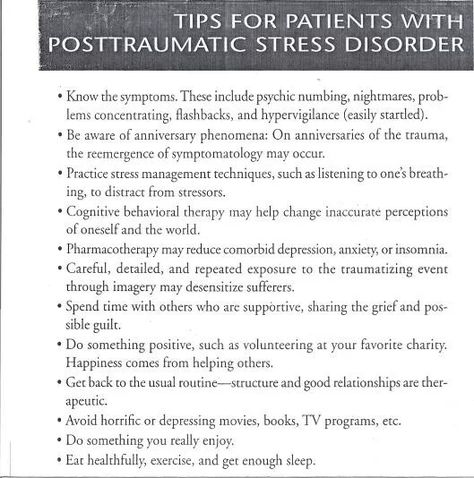 Biol Psychiatry. Feb 3 2006.
Biol Psychiatry. Feb 3 2006. - Ressler KJ, Rothbaum BO, Tannenbaum L, et al. Cognitive enhancers as adjuncts to psychotherapy: use of D-cycloserine in phobic individuals to facilitate extinction of fear. Arch Gen Psychiatry. Nov 2004;61(11):1136-1144.
- Pitman RK, Sanders KM, Zusman RM, et al. Pilot study of secondary prevention of posttraumatic stress disorder with propranolol.Biol Psychiatry. Jan 15 2002;51(2):189-192.
- Litz BTWL, Wang J, Bryant R, Engel CC.A therapist-assisted Internet self-help program for traumatic stress. Prof Psychol Res Pr. December 2004;35(6):628-634.
New York State Department of Mental Health expresses thanks to the National Institute of Mental Health for the information, used in this booklet.
Published by the State Department of Mental Health New York, June 2008.
New York State
Andrew M. Cuomo Governor
Mental Health
Head of Department Michael F.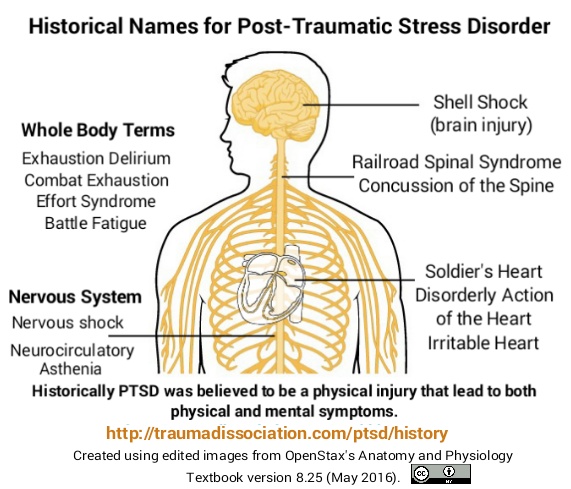 Hogan, PhD
Hogan, PhD
For more information about this edition contact:
New York State Office of Mental Health
Community Outreach and Public Education Office
[New York State Department of Mental Health
Public Relations and Community Education Department]
44 Holland Avenue
Albany, NY 12229
866-270-9857 (toll free)
www.omh.ny.gov
For questions and complaints about mental health services Health in New York contact:
New York State Office of Mental Health
Customer Relations
[New York State Department of Mental Health
Customer Service ]
44 Holland Avenue
Albany, NY 12229
800-597-8481 (toll-free)
For information about mental health services in your neighborhood, contact
nearest New York State Department of Mental Health (NYSOMH) regional office:
Western New York Field Office
[Western New York Regional Office]
737 Delaware Avenue, Suite 200
Buffalo, NY 14209
(716) 885-4219
Central New York Field Office
[Central New York Regional Office]
545 Cedar Street, 2nd Floor
Syracuse, NY 13210-2319
(315) 426-3930
Hudson River Field Office
[Hudson River Regional Office]
4 Jefferson Plaza, 3rd Floor
Poughkeepsie, NY 12601
(845) 454-8229
Long Island Field Office
[Long Island Regional Office]
998 Crooked Hill Road, Building #45-3
West Brentwood, NY 11717-1087
(631) 761-2508
New York City Field Office
[NYC Regional Office]
330 Fifth Avenue, 9th Floor
New York, NY 10001-3101
(212) 330-1671
What is PTSD and how to get rid of it
April 14 Likbez Health
It is possible to maintain a healthy mind even after a disaster.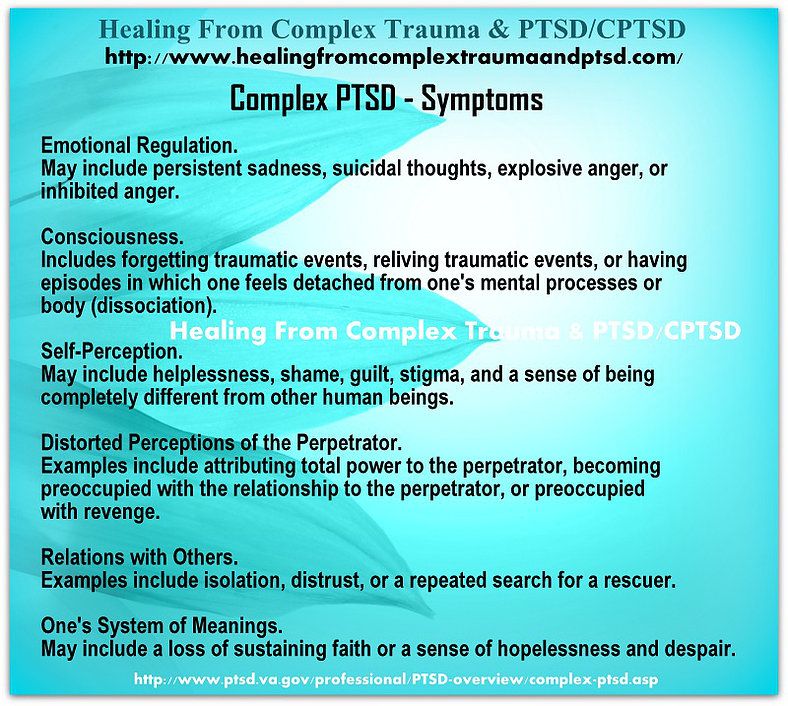
What is PTSD
Post Traumatic Stress Disorder, or PTSD for short, is a mental condition that interferes with the lives of some victims or observers of horrific events: combat, catastrophes, accidents, physical or sexual abuse. Initially, the diagnosis was made to those who had been in the war, but PTSD can develop in anyone.
Most people feel anxious, sad, angry or irritated after a traumatic event. They have insomnia and constant fatigue. This is a normal reaction to a threat to life and health, a feeling of helplessness and loss of control over what is happening. But after a month, these manifestations, as a rule, weaken and people return to normal life.
If the symptoms do not subside, the person continues to be tormented by memories and nightmares, we can talk about the development of post-traumatic stress disorder. According to the WHO, it needs treatment 9% of those who experienced something terrible. At the same time, women suffer from PTSD 2.5 times more often than men, although men face more dangerous situations.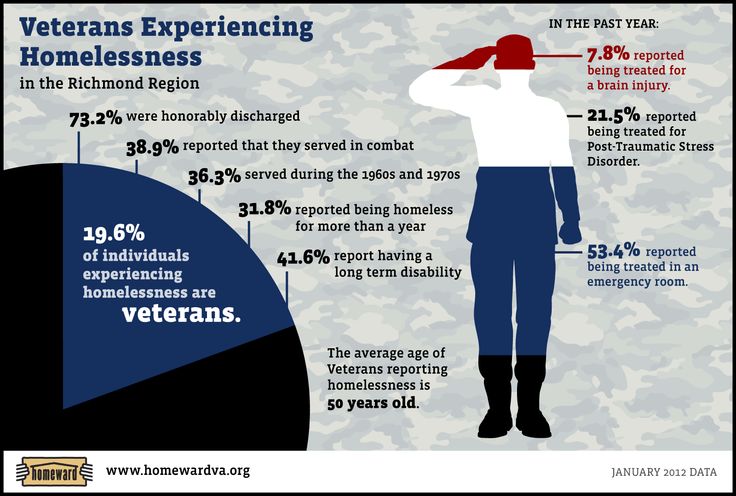
PTSD cannot be left untreated. The disorder spoils personal, social, work relationships, interferes with daily tasks.
Why PTSD occurs
It is not known exactly why certain people develop stress disorder. But there are factors that increase the risks:
- The nature of the injury. The stronger and longer the stress, the higher the likelihood of PTSD.
- Previously experienced psychological trauma. For example, childhood abuse.
- Heredity. Those with relatives who have had anxiety disorders or depression are more at risk.
- Work or hobbies associated with constant stress or danger to life.
- Presence of other mental disorders.
- Temperament and how the brain regulates hormones and other chemicals that are released in response to stress.
- Lack of support from loved ones after an injury.
- Frequent use of alcohol and other psychoactive substances.
How PTSD manifests itself
Symptoms of PTSD are more often detected within a month after the event, but sometimes they are not noticed until several years later.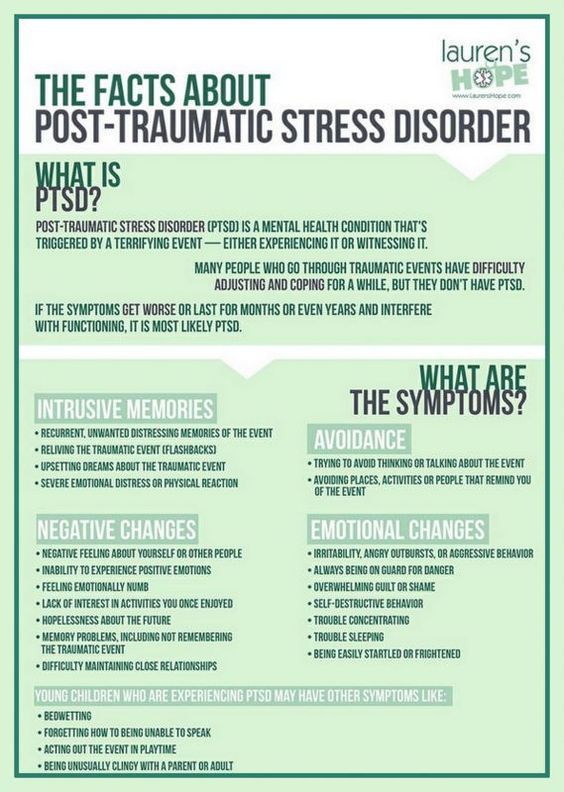 This can happen against the background of new stress or an accidental reminder of the experience.
This can happen against the background of new stress or an accidental reminder of the experience.
Symptoms can be divided into four main groups.
Obsessive memories and dreams
- A person cannot forget and constantly replays what happened in his head.
- He has nightmares that make him afraid to go to bed.
- Any reminder of an event causes strong emotions or physical manifestations. For example, after a car accident, the victim reacts to a car signal with shaking in the hands or a sharp attack of fear.
Avoidance
- The victim is constantly trying to forget about the experience, it takes a lot of strength and energy.
- He diligently avoids places or people that can remind him of something terrible. For example, after the death of a loved one, a person may refuse to meet with other relatives so as not to talk about the deceased.
- Gives up favorite activities if they are somehow related to what happened.
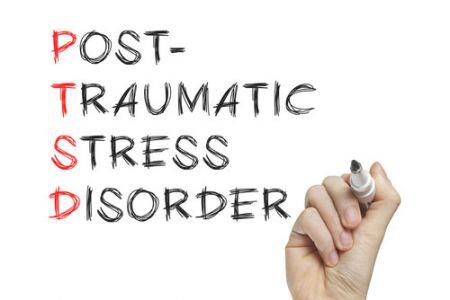 A girl who survived an attack in the stairwell may refuse to train after work because she is afraid to return home in the evening.
A girl who survived an attack in the stairwell may refuse to train after work because she is afraid to return home in the evening.
Changes in mood and thinking
- Negative thoughts about yourself, other people or the world appear.
- Haunted by a feeling of hopelessness. There are no goals in life and the desire to change something.
- There are memory problems. Sometimes it is not possible to remember important details of the traumatic event.
- It becomes difficult to communicate with loved ones, maintain relationships.
- Loss of interest in hobbies or meeting friends.
- The victim is not able to rejoice or grieve, only detachedly observes life from the outside.
Changes in physical and emotional reactions
- A person constantly feels a threat to life and seeks to protect himself by any means.
- Often feels guilty or ashamed. Thinking about how it could have been avoided.
- Loss of concentration, difficulty working or just reading a book.

- The victim may be short-tempered and aggressive.
- Sleep problems appear.
- Man unconsciously strives for self-destruction. For example, he drinks a lot or ignores traffic rules.
Symptoms may increase or decrease, appear only with new stress or a reminder of a terrible event. The victim himself may not associate problems with sleep or concentration with the trauma experienced, especially if a lot of time has passed. But at the same time, constant stress interferes with a normal life.
What to do if you have thoughts of suicide
In this case, you should immediately seek help:
- Call the Center for Emergency Psychological Assistance of the Russian Emergencies Ministry (+7 495 989‑50‑50) or the Independent Psychiatric Association (+ 7 495 625-06-20). They work around the clock.
- Write to a psychologist on the website of the Ministry of Emergency Situations - this is possible without registration.
- Contact your loved ones for support.
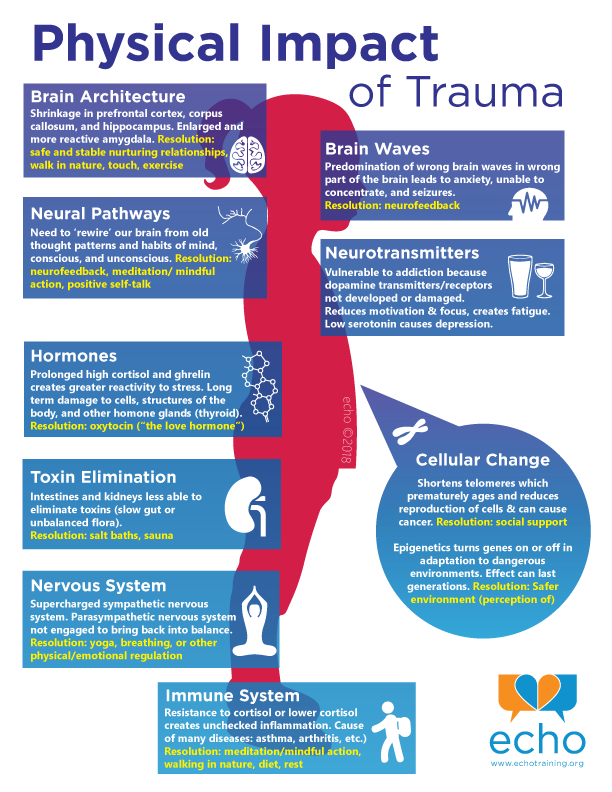
How PTSD is treated
Post-traumatic syndrome should not be ignored, the problems will not go away on their own. The best place to start is to see a therapist. He will check if there are any physical diseases that can cause changes in the psyche. To do this, the doctor will conduct an examination and prescribe the necessary examinations. This could be a chest x-ray, blood tests, or a CT scan of the brain.
If everything is in order with the body, the therapist will refer you for a consultation with a specialized specialist. He will determine whether medication is needed or psychotherapy will be enough.
Before meeting with a psychotherapist, prepare a list of symptoms, behavioral changes, or lifestyle changes. At the appointment, ask the specialist about the experience of working with post-traumatic stress syndrome and the number of patients who have overcome it. It is important to ask all the exciting questions at once, because the success of treatment largely depends on the trusting relationship between the patient and the psychotherapist.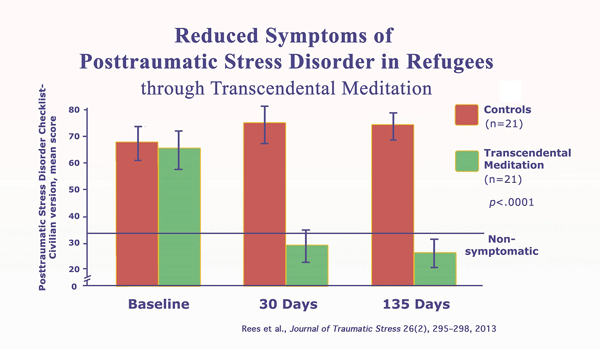
What psychotherapy can be like
According to experts, only psychotherapy can get rid of PTSD. Medicines can only relieve acute manifestations and temporarily improve the quality of life.
Several methods are used to treat PTSD:
- Cognitive therapy . The doctor will analyze the thinking errors and stereotypes that prevent you from returning to normal life after an injury. For example, the thought "I'm bad because they did this to me" will gradually turn into "They did this to me, but that doesn't make me bad." The patient will keep a diary and describe in it his condition and reactions to different situations. Gradually, a person will learn to solve problems that were previously beyond his power.
- Behavioral or exposure therapy . The meaning of the method is to return to a traumatic situation under the control of a psychotherapist. The patient is immersed in the past with the help of video, sounds or verbal description, but the specialist teaches to cope without panic and horror.
 Over time, memories cease to frighten, it becomes possible to live on without looking back at the trauma.
Over time, memories cease to frighten, it becomes possible to live on without looking back at the trauma. - EMDR, or EMDR - eye movement desensitization and processing. This method was developed specifically for the treatment of post-traumatic disorders. It is believed that the brain cannot cope with the processing of a stressful event and therefore memories do not go away. In an EMDR session, the patient briefly focuses on the past and at the same time on eye movements or other stimuli: pats, sounds. This synchronizes the activity of both hemispheres and helps the brain process painful memories. If the injury was mild, four or five sessions may be enough.
What drugs can be prescribed by a doctor
Medications are prescribed simultaneously with psychotherapy, if you need to remove the most striking manifestations of the disorder and improve the quality of life before psychotherapy works.
Several groups of drugs are used:
- Antidepressants .
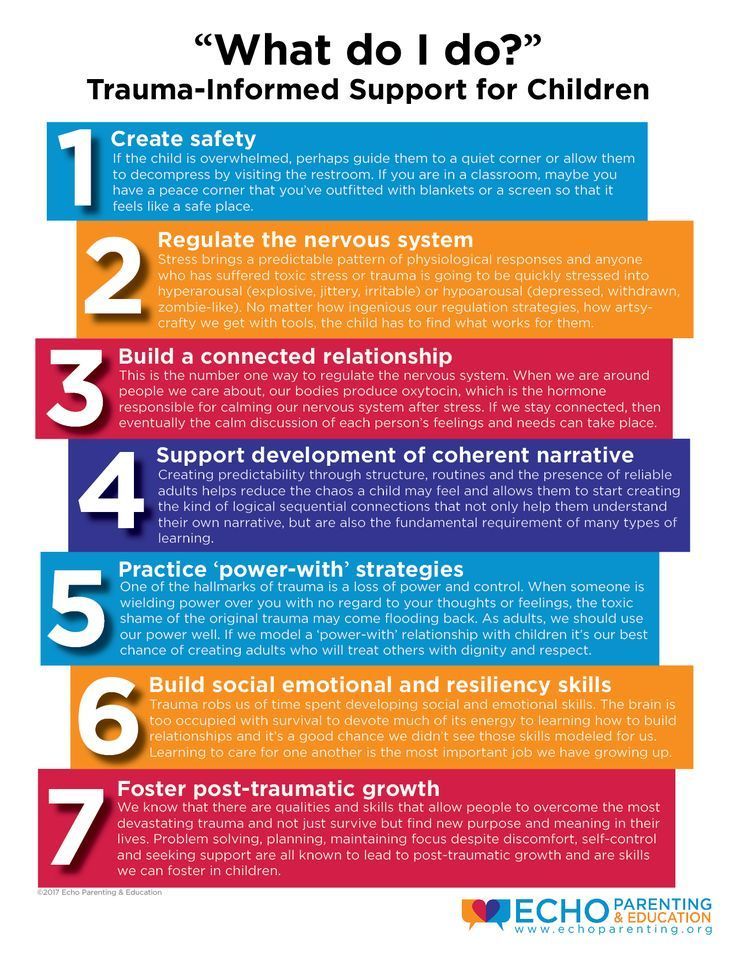 May reduce symptoms of anxiety and depression, improve sleep, memory and concentration.
May reduce symptoms of anxiety and depression, improve sleep, memory and concentration. - Mood stabilizers . They are used to reduce impulsivity, anger attacks and to reduce irritability.
- Antipsychotics . They are prescribed if the shock was too severe and memories and emotions interfere with life.
- Benzodiazepines . Used to reduce severe anxiety and improve sleep. But now they are rarely appointed.
What else can you do
Taking care of yourself helps you get back to normal life faster and easier. For this it is worth:
- Follow the treatment plan, even if it seems that psychotherapy and medications do not help. It takes time to get easier.
- Find an opportunity for good rest and sports or walks. Physical activity and healthy sleep relax and help to recover.
- Diverse and tasty food. The lack of useful elements can worsen the mental state.
- Reduce or eliminate possible sources of stress.
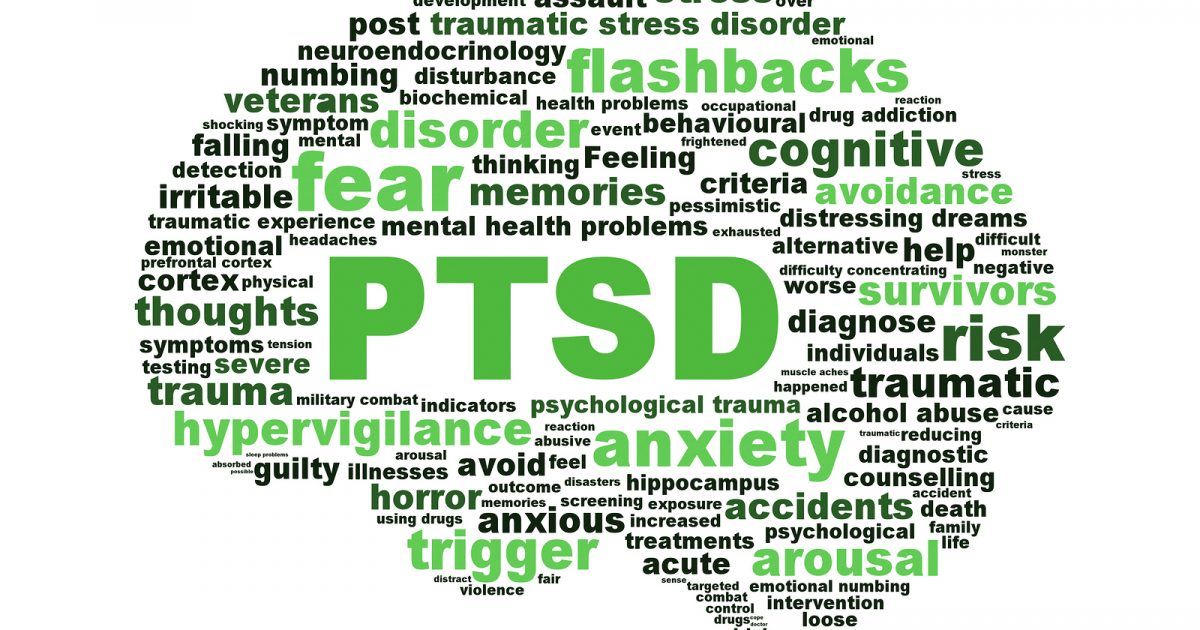 New causes for concern lengthen the treatment.
New causes for concern lengthen the treatment. - Avoid coffee, alcohol and cigarettes. They can increase anxiety.
- Communicate with loved ones and meet friends who can support and listen.
- Find interesting hobbies that will distract from experiences and memories.
How successful is the treatment of PTSD
Everything is individual. The result will depend on the severity of the symptoms, as well as the efforts of the patient and the support of loved ones.
But if you follow all the doctor's recommendations, sooner or later you can be cured and return to normal life.
Moreover, new preparations and methods are constantly appearing. For example, the US Food and Drug Administration recently approved an app to interrupt nightmares.
How to help a loved one with PTSD
If a relative or friend has PTSD, the most important thing is to help them seek professional help. After all, the victim may inadequately perceive the situation and believe that everything will pass by itself.